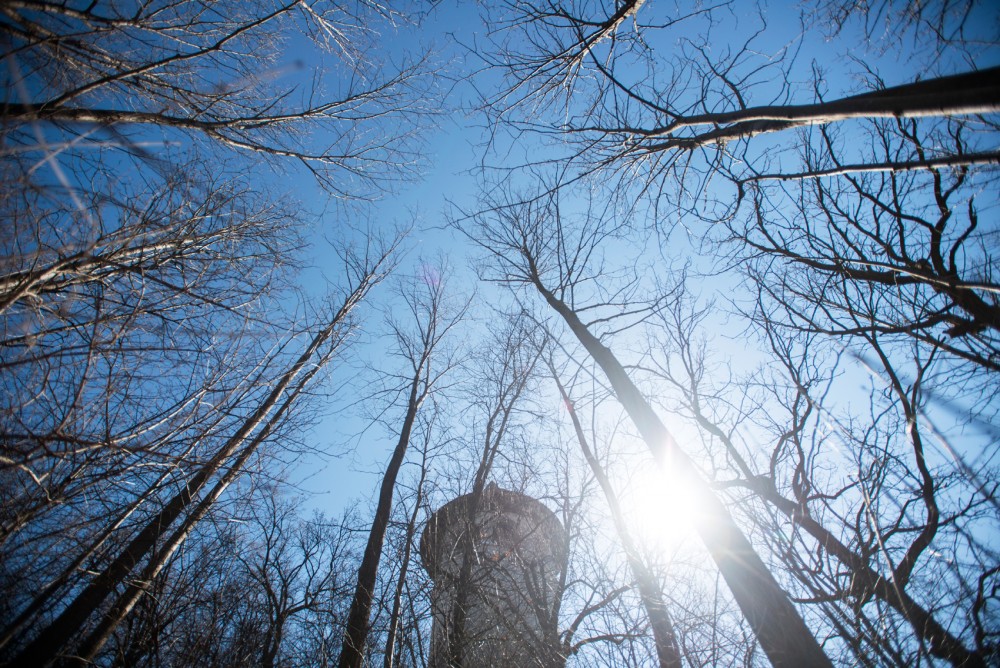Trees might be better at adjusting to increased temperature than previously thought, according to findings from a University of Minnesota study.
The University’s Department of Forest Resources found that some species of trees can acclimate and release less carbon than expected when exposed to warmer-than-normal temperatures.
The research team tested 10 different species of trees in two plots of land in northern Minnesota, one in Cloquet and one near Ely, said Rebecca Montgomery, forest resources associate professor and co-author of the study.
Using an advanced system of infrared heaters, the researchers artificially warmed the temperature of soil and roots of trees by 3.4 degrees Celsius for extended periods of time, said Peter Reich, a University forest resources professor and the study’s lead author.
By comparing the warmed area to a control plot, the scientists found that trees can make internal adjustments to their metabolism that reduce their long-term sensitivity to higher temperatures, Reich said.
All 10 species of trees reacted similarly, Montgomery said.
“It points to questions of why … [and] what’s the underlying mechanisms that allows them to make these adjustments to their metabolism,” she said.
Past studies suggested trees weren’t adaptable to this extent, Montgomery said. The current findings give scientists better data for global climate models and the future
health of terrestrial ecosystems, she said.
The United States Department of Energy funded the research and selected the project to improve the department’s climate models, DOE Terrestrial Ecosystem Sciences Program Director Dan Stover said.
The DOE relies on data from studies like this to make accurate predictions about ecosystems and climate change, he said.
“Fundamentally, beyond the models, we’re learning something new about these ecosystems,” he said.
Most of the data scientists currently have on the subject comes from short-term studies, according to ecology, evolution and behavior and plant biology professor Jennifer Powers.
The three-year long research process provided more conclusive results, she said.
The results can be incorporated into larger scale biosphere-atmosphere interaction models, Powers said, which focus on projecting pollution in the atmosphere. These models help scientists better understand the scope of climate change, she said.
“It doesn’t mean that climate change isn’t a problem and that we don’t have to worry about it,” Powers said.
A tree’s ability to absorb carbon helps reduce the current impact of climate change, Montgomery said.
“If terrestrial ecosystems … switch to giving off carbon, that’s basically a positive feedback, and they add to the problem,” she said.
Over the last few years, the flow of carbon from the atmosphere to trees has been slightly greater than the flow of carbon back to the atmosphere, Reich said.
If more carbon is released into the atmosphere, the planet warms faster, he said.
“This is good news in the sense that things aren’t getting worse faster,” Reich said. “We’re still racing towards the climate change cliff, but we’re just going there a little slower than we feared.”


